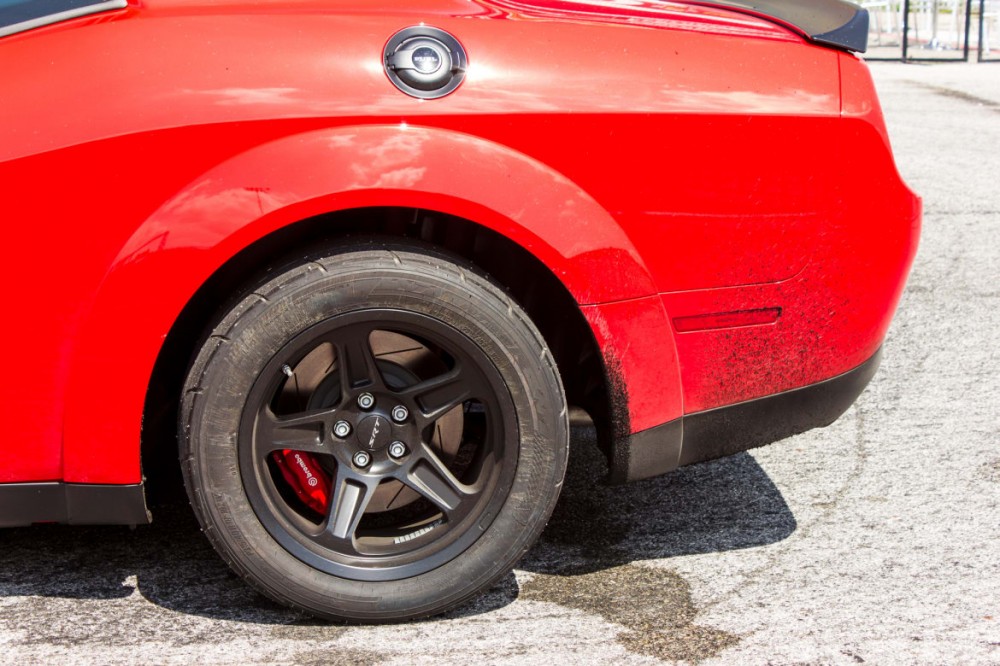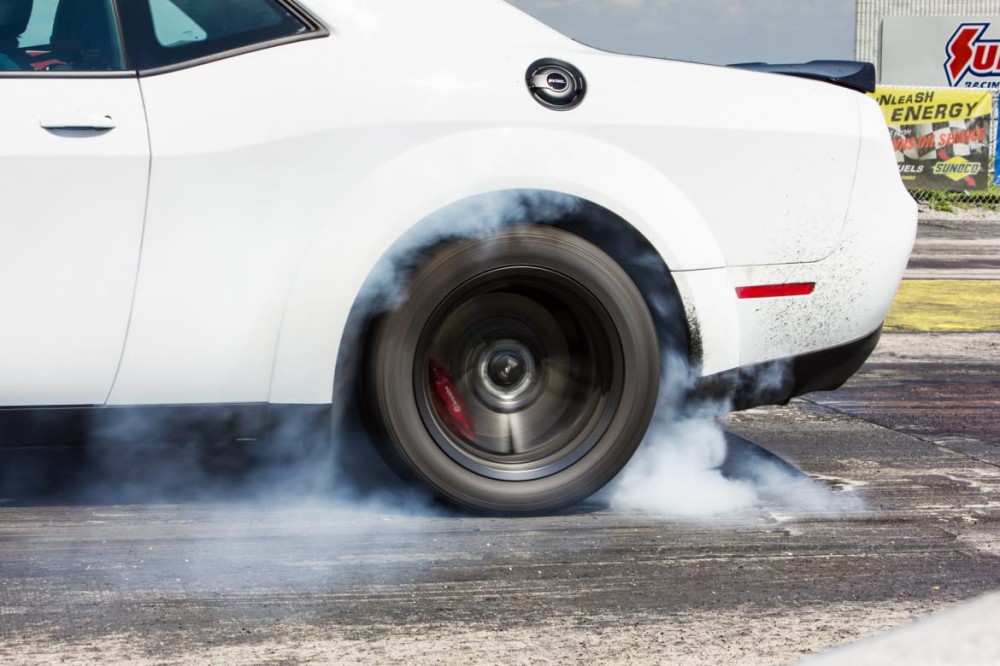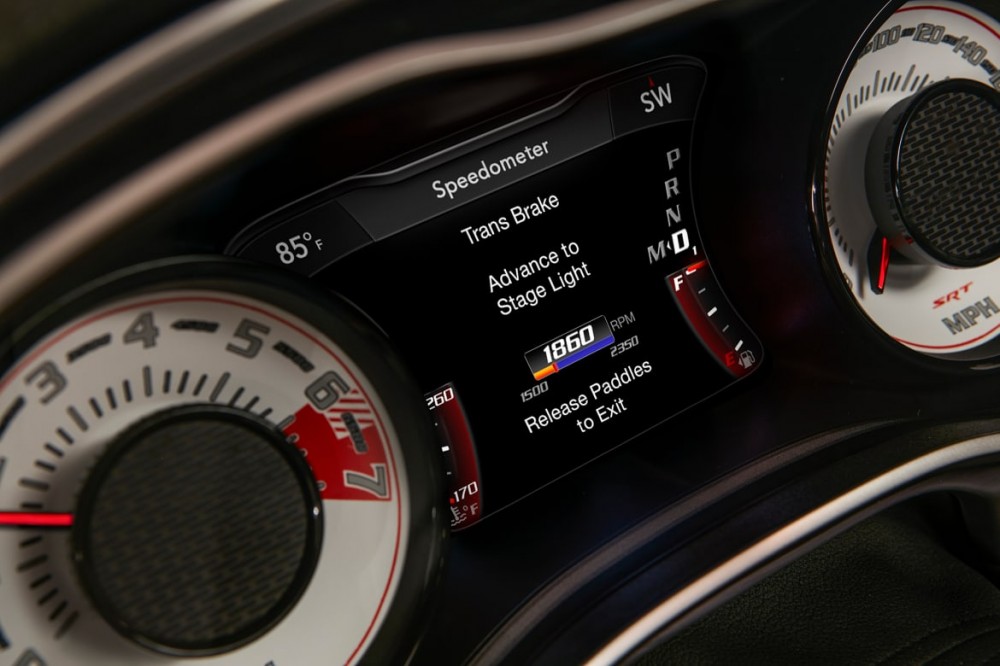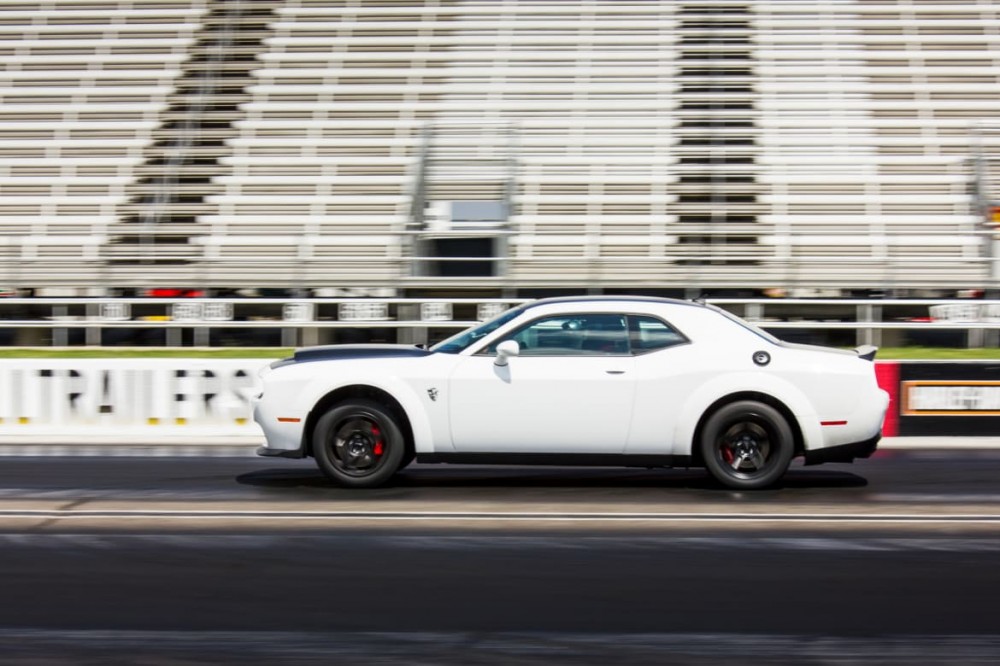CARS.COM — I'd be lying if I said I wasn't intimidated by the opportunity to drive the 840-horsepower 2018 Dodge Challenger SRT Demon, a car claimed capable of a 9-second quarter-mile. My drag-racing experience includes fun runs in an 11-second personal car and a few Hellcats, but nothing as radical as the Demon, which can go from zero-to-140 mph in 1,320 feet.
Dodge brought a collection of Demons — set on "kill" — to Lucas Oil Raceway drag strip in Indianapolis for us to drive. Each car ran 100-octane fuel to uncork the full 840 hp, and some had the whole package with pizza-cutter front tires and deleted seats.
Related: 2018 Dodge Challenger SRT Demon Preview
I got the full quarter-mile experience in the Demon, and what surprised me (that shouldn't have) is that even with a stickier tire and big tweaks to improve traction, there's nothing tame, nice or easy about driving this 840-hp Challenger down a drag strip. There's an intricate process to get the most from the Demon that isn't as simple as flooring the accelerator off the line and gleefully popping wheelies — which it does.

First, it starts with a smoky burnout to heat the Nitto drag radial tires. They aren't off-the-shelf Nitto NT05R drag radials but have been spec'd to the Demon, with unique compound and construction for increased traction plus a speed rating increase from 149 mph to 168 mph to give a little extra breathing room after trapping 140 mph at the top end of the track. Activated in the main touchscreen's SRT menu pages, the Demon's line-lock feature applies brake pressure to the front brakes only, allowing the rears to spin freely, so romping on the accelerator revs through the first few gears while smoke billows out of the rear fenders and shards of burnt tire rubber fling all over the side of the car.

With the sticky tires heated, it's time to get to the line and activate the TransBrake, a launch assist feature that Dodge says is the fastest way to drive the Demon. It makes for hard, hard launches when everything is done right; following an afternoon of instruction from the Demon's engineers, I hadn't mastered the feature so much as used it well enough to not look like a fool at the starting line. Functionally, TransBrake locks the transmission's output shaft to hold the car at the starting line while letting engine speed rise from around 1,000 to 2,300 rpm, simultaneously building up to 8 pounds per square inch of supercharger boost in preparation to launch the car at full blast — a feature called Torque Reserve.

While I don't want to bore you with a "how-to" (each Demon comes with an owner's manual for that, and there are also step-by-step instructions in the instrument cluster screen), I'll share how involved the sequence is because it's unlike anything I've experienced using various launch controls or race start assists. The sequence starts with the Demon in Drag mode as you pull back both steering wheel paddles to begin the sequence and engage the TransBrake. While holding the pedals, you push the brake pedal with your left foot while simultaneously raising engine speed above 1,500 rpm but below 2,350 rpm; by this point, the engine's Torque Reserve has changed the exhaust's tone into a funky spitting sound while building boost. With the paddles pulled back and brake and accelerator applied, you can then release brake pressure slightly to creep into the staging beams — being careful not to let the revs drop too much or climb too high lest the feature disengage. Once staged, it's time to release one paddle to fully engage the TransBrake and then release the brake pedal while maintaining engine speed. You're then holding back 840 hp with a single paddle (and no foot on the brake pedal) while waiting for the green light to drop.

Releasing that paddle feels like a punch to the chest when the launch is good. Best launch practice called for stabbing the accelerator with about 30 percent throttle right off the TransBrake to plant the rear tires without spinning, and then continuing to feed on power — otherwise, it was easy to spin the tires. My best launches happened around 1,700 rpm.
With the nose pointed high and the car screaming down the track, there eventually comes a time to stop, and slowing the Demon is a unique experience, as well. With the skinny front tires and smaller brakes than a regular Hellcat, the Demon took a lot of brake pedal to slow the car in time for the first turnaround on the track.
For such a brute, the Demon takes a delicate foot to drive. But it isn't as unwieldy as I thought it would be for an 840-hp Challenger with skinny front tires. Dodge didn't provide timeslips at this event, but the experience even without the times showed us how extreme the Demon is and the lengths to which Dodge went to make this wild Challenger work at the drag strip.








